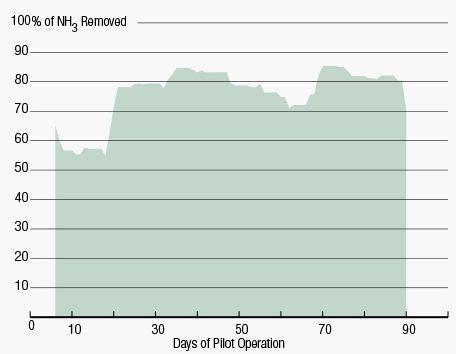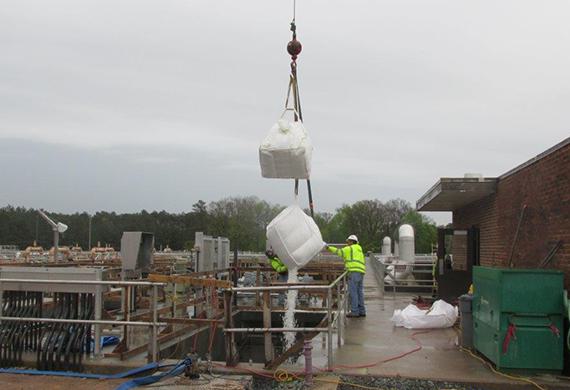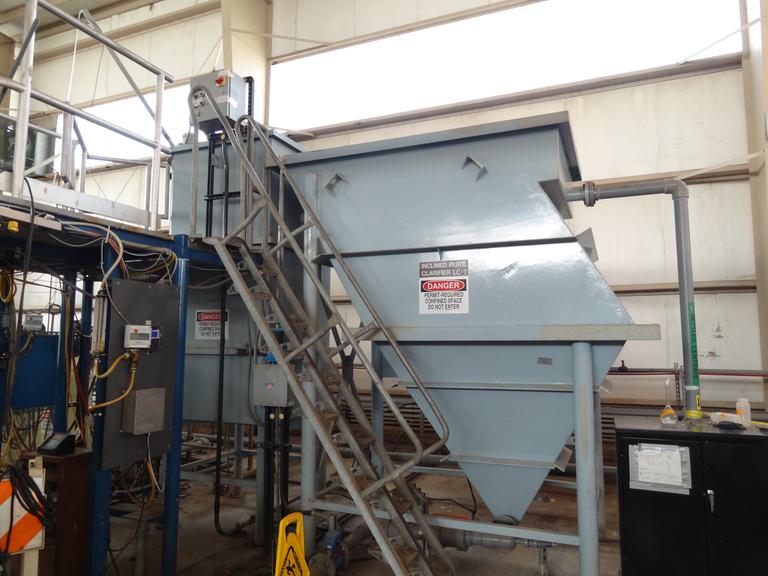Sidestream Treatment Solutions for the South Shore WRF

The nitrogen removal pilot at the South Shore WRF was one facet of the Hurricane Sandy Recovery Program, which was created to assist Nassau County in the long-term Hurricane Sandy recovery effort for the facility.
The Nassau County Department of Public Works owns and operates the 70-mgd South Shore Water Reclamation Facility (formerly the Bay Park Sewage Treatment Plant), which was heavily damaged during Hurricane Sandy. When faced with rebuilding the facility, the County decided to capitalize on the opportunity and proactively prepare the plant for anticipated future nitrogen removal requirements.
As part of the recovery and rebuild efforts, the County turned to Hazen to assist with evaluating and demonstrating innovative technologies that would enable the facility to achieve nitrogen removal in the most efficient way possible. While conventional methods were considered, a comprehensive process evaluation identified sidestream treatment as a promising alternative.
In this approach, a novel biological process called deammonification would be utilized to biologically remove approximately 10% of the total nitrogen at the South Shore WRF. Deammonification is an emerging process that can reduce the cost of wastewater treatment for many facilities, enabling an approximately 63% reduction of theoretical O2 requirements, an approximately 100% reduction of supplemental carbon requirements, and a significant reduction in biomass handling requirements when compared to removal through a mainstream activated sludge process.
A cost evaluation conducted as part of our research indicated that the South Shore WRF would observe potential savings of approximately $1 million per year using deammonification by avoiding supplemental carbon and aeration costs.
Technology Alternatives and Selection
Presently, there are three main technology options for equipment related to performing sidestream deammonification.
Related Topics:

After a careful consideration of the available technologies, the DEMON™ process was selected for piloting. The DEMON™ process employs a sequencing batch reactor configuration, coupled with a hydrocyclone, for the selective wasting of nitrite oxidizing bacteria and the retention of anaerobic oxidizing bacteria (Anammox). The Anammox bacteria are the main biological catalysts behind the deammonificiation process.
The reactors are filled from a filtrate/centrate equalization tank and operated in batch mode. Aeration is followed by mixing and then sedimentation. The effluent is then decanted from the sequential batch reactor. Each cycle (fill, reaction, settle, withdraw) is repeated approximately three times per day.
DEMON Pilot Testing and Results
Hazen, in collaboration with World Water Works and Nassau County, piloted the DEMON™ process at the South Shore WRF from August to November 2013.

Start-up of the system was accomplished within 20 days to meet 80% removal of influent ammonia, and this high level of performance was maintained for the duration of the pilot. Additionally, no supplemental alkalinity or carbon was required, demonstrating that the sidestream deammonification process is a viable, cost-effective strategy for nitrogen reduction at the South Shore WRF.
As a result of the success of this piloting effort, we are currently working on a full-scale design of a sidestream deammonification system for South Shore using the DEMON technology.

Hazen also designed the first Anitamox® process to be implemented in the United States at the South Durham WRF.

In conjunction with several partners, we also conducted a separate centrate deammonification (SCAD) pilot at the 26th Ward WPCP. Results from the startup phase indicated rapid enrichment of anaerobic ammonia activity in less than 30 days.
Future Applications
Even though the deammonification process is an emerging technology, opportunities for process optimization are already being explored. As part of the South Shore project, Hazen and Sawyer, in collaboration with Manhattan College researchers, developed and utilized an Anammox-specific activity assay. This assay, which tracks anammox activity during periods of both high and low activity and can be applied to other deammonification systems to compare results, represents a simple and effective strategy that can be used to directly monitor the health of the Anammox bacteria in the deammonification process. It also provides the industry with a first step toward diagnosing and solving process instabilities that can arise from dynamic full-scale operation of deammonification systems.










